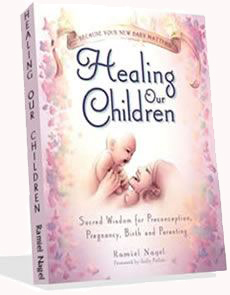Despite ever-improving access to medical care, cesarean deliveries carry a far higher risk of morbidity for both mom and baby than vaginal births. Morbidity rates for women attempting vaginal births following cesarean, rather than going with elective repeat cesareans is nearly half. In other words, in terms of safety, vaginal births are the safest, vaginal births after cesarean second safest, and cesarean deliveries the most complicated and dangerous. Furthermore, the danger of experiencing a major complication during surgery increases with each surgical delivery that the mother endures.
Apart from the clear health risks involved in choosing to have an elective cesarean, rather than trying for a vaginal delivery sometimes referred to as a TOL or trial of labor, early bonding and breastfeeding is greatly affected. Most women who have surgical deliveries are woozy from the pain medication and separated from their baby for hours, during post operative care. These first hours of birth are critical to bonding and the development of a healthy supply of breast milk.
Furthermore vaginal birth is safer for the baby. Babies who are born vaginally are able to experience the natural cleaning of their lungs that comes from being expelled through the birth canal. Better yet, if the vaginal birth occurs naturally, without induction, the baby has a better chance of being born at term and far fewer risks of health complications.
Though the overwhelming majority of women, more than 90%, can deliver vaginally, the US cesarean rate currently rests at 29% for babies born in hospital. Most midwives and birth centers have a rate of less than 10% (far closer to what the rate should be). The World Health Organization claims that the target percentage for women receiving operative deliveries should fall between five and ten percent. In 1965, the US ceasarean rate rested at only 4.5%. At that time women commonly went past their estimated due dates and were rarely induced. Today, nearly half of all births are induced with strong forms of synthetic hormones and nearly one in three American women leave the hospital having undergone major surgery for a very natural function.
The more common cesareans become in the US, the more frequently mothers die. Few people realize that the morbidity rate for childbirth in the United States is extremely high and has remained high for decades, only in the last year has a slight dip been noted. There are third world countries, highly dependent on midwife assisted deliveries, that have substantially better outcomes than the United States.
According to ACOG, the American Congress of Obstetrics and Gynecology, women who do not have serious underlying conditions should be offered a VBAC. The practice is considered safe, even for most women who have undergone two previous cesareans. Still many doctors and hospitals do not practice this rule and may even convince women that a repeat cesarean is the best or only choice in times when it is not.
If a mother wants to attempt a vaginal delivery, she should take time to contact her local ICAN group for physician or midwife recommendations and continue to push. More and more healthcare workers are opening their eyes to the benefits of VBAC and offering healthy, capable clients the option.
References




















